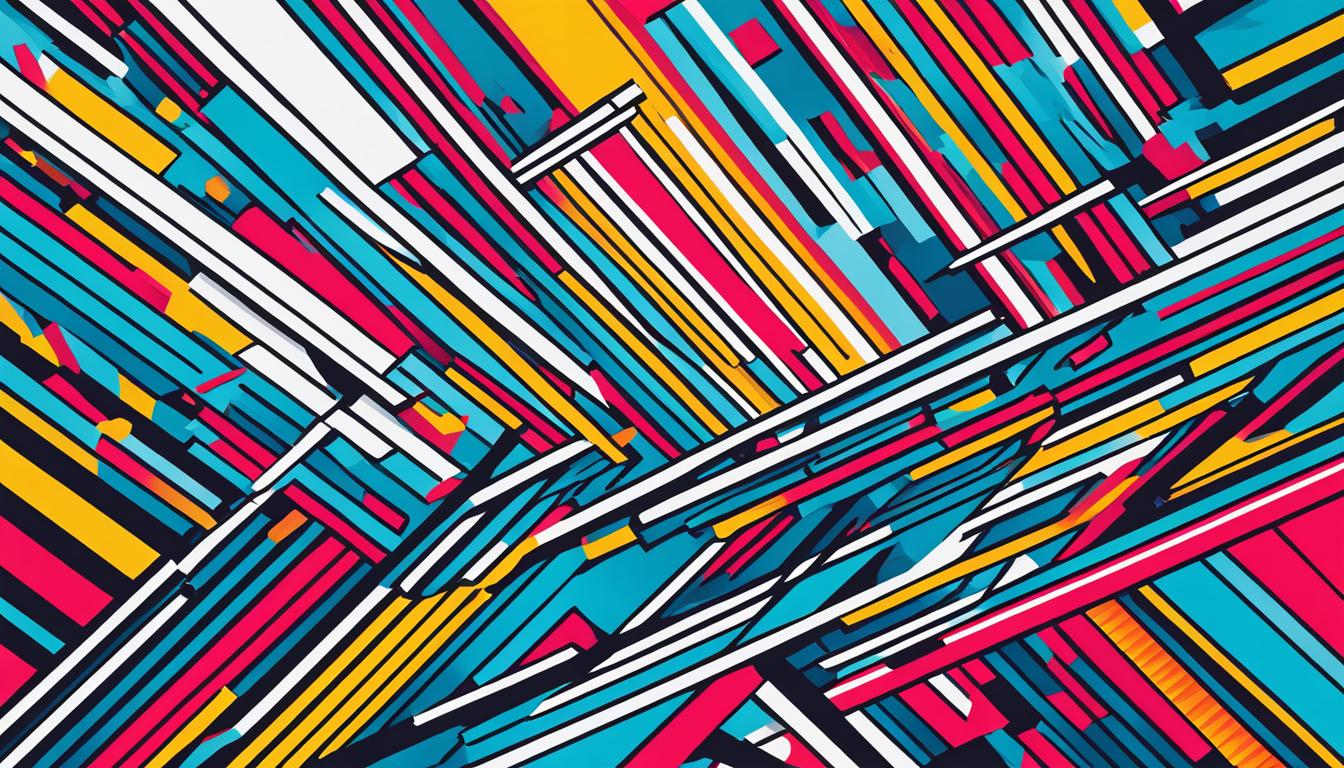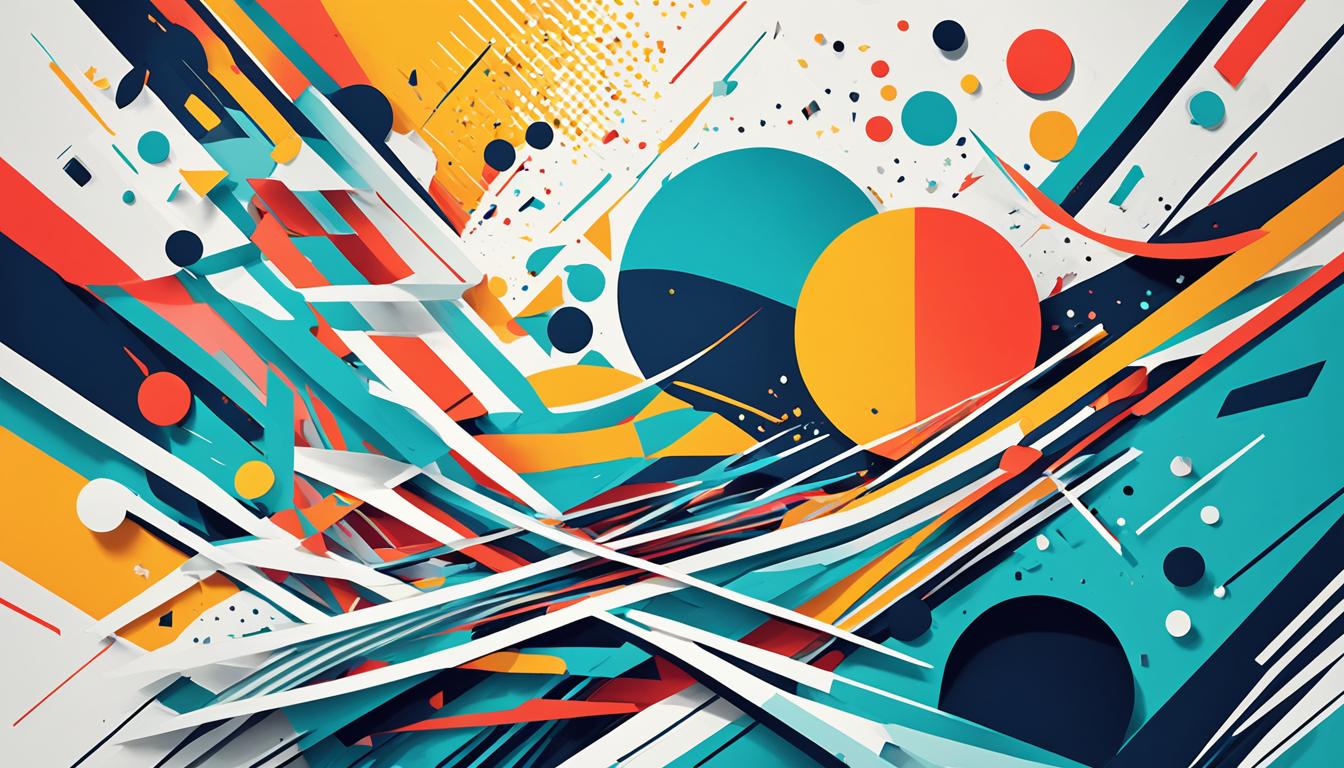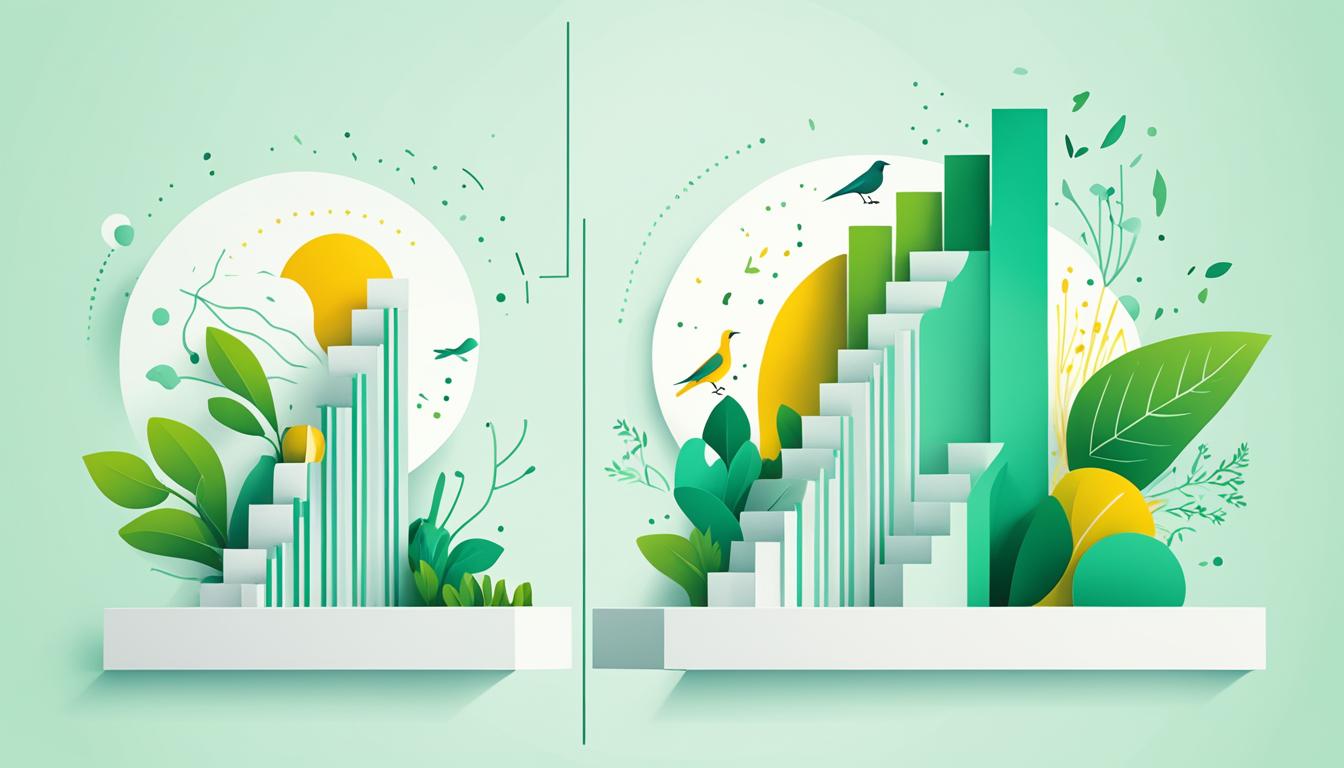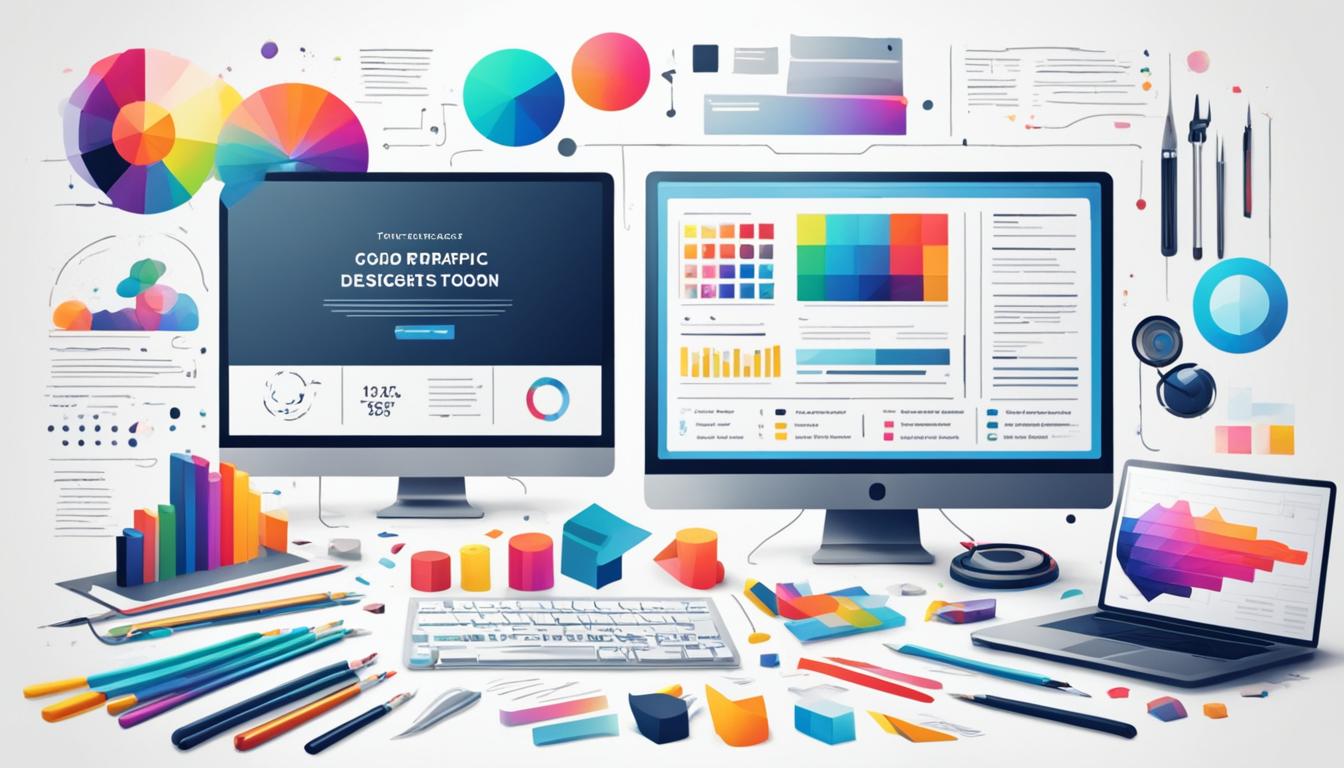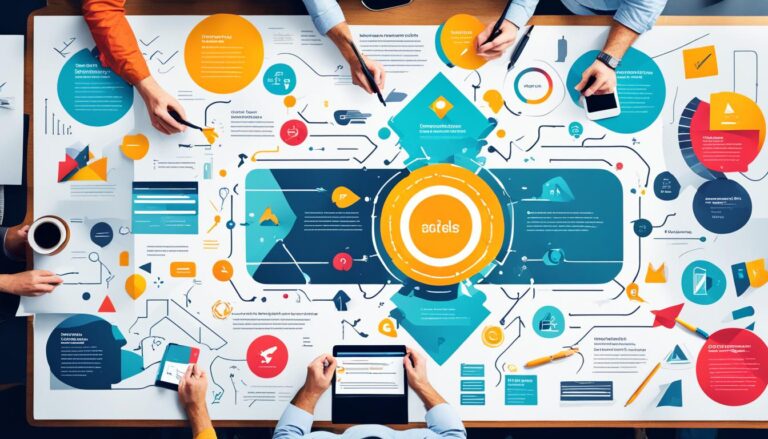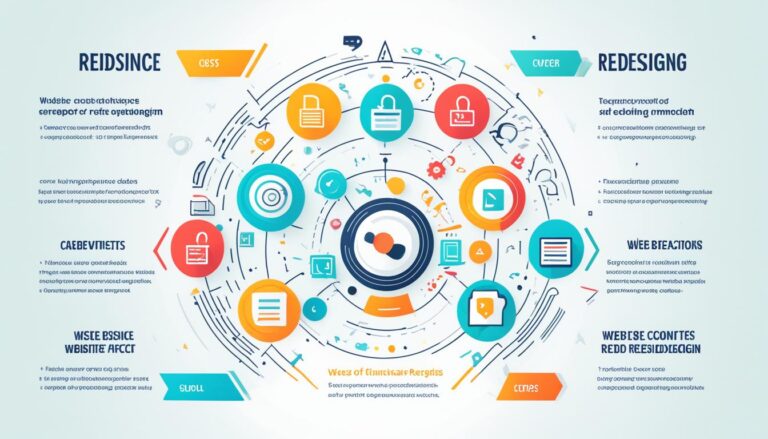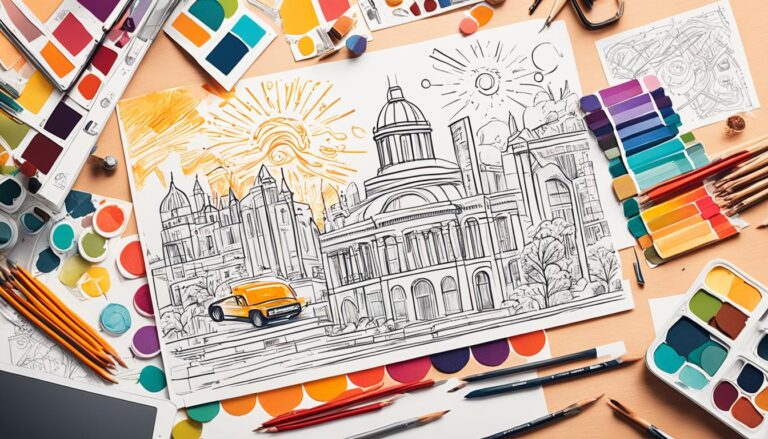Exploring Graphic Design in Art – A Guide
Welcome to our comprehensive guide on graphic design in art. In this guide, we will delve into the exciting world of graphic design, exploring its impact on visual communication and aesthetics. Whether you are a budding artist or an aspiring designer, this guide will equip you with the necessary knowledge and skills to navigate the realm of graphic design effectively.
Graphic design is an art form that combines creativity and technology to visually convey messages and ideas. Through the skillful use of typography, images, and design components, graphic designers create visually compelling visuals that communicate and engage with their audience. By understanding the principles of graphic design, you can create aesthetically pleasing and impactful designs that effectively deliver your message.
This guide will cover all the essential aspects of graphic design, from grasping the fundamentals and exploring design elements to crafting your very own graphic design project. With each section, you will gain valuable insights and practical tips that will enhance your understanding and skills in graphic design.
Are you ready to embark on an artistic journey that combines creativity with technology? Let’s uncover the captivating world of graphic design in art!
Grasping the Essentials of Graphic Design
When it comes to graphic design, understanding the essentials is crucial. In this section, we will explore what graphic design is all about and delve into the essential tools and principles that form the foundation of this creative discipline.
The Definition of Graphic Design
Graphic design combines art and technology to create visually appealing and impactful designs. It encompasses a wide range of mediums, including print materials, digital graphics, and web design. Graphic designers use their creativity and technical skills to communicate messages effectively through visual elements.
The Essential Tools for Graphic Design
To create stunning designs, graphic designers rely on a variety of tools. These tools help them bring their creative visions to life and enhance their workflow. Some of the essential tools used in graphic design include:
- Design Software: Programs like Adobe Photoshop, Illustrator, and InDesign are the industry standard for graphic design. These software applications offer powerful features and capabilities that enable designers to manipulate images, create illustrations, and design layouts.
- Tablet and Pen: Many graphic designers use graphic tablets or pen displays to sketch and draw directly on their computer screens. These devices provide precision and control, allowing designers to create intricate and detailed illustrations.
- Color Management Tools: Accurate color representation is vital in graphic design. Color management tools help designers ensure consistent and accurate color reproduction across different devices and print materials.
- Typography Resources: Fonts and typographic resources play a crucial role in design. Having access to a diverse collection of fonts and resources allows designers to create unique typographic compositions that complement their designs.
The Design Principles in Graphic Design
Graphic design is governed by certain principles that guide designers in creating visually harmonious and effective designs. These design principles include:
- Balance: Achieving a visual equilibrium by distributing elements evenly throughout the design.
- Contrast: Using contrasting elements to create visual interest and highlight important information.
- Alignment: Ensuring that elements are appropriately positioned and aligned to create a cohesive design.
- Proximity: Grouping related elements together to create a connection and improve readability.
- Repetition: Using consistent design elements throughout the project to establish unity and reinforce the message.
By understanding these essentials, tools, and design principles, graphic designers can create visually stunning and impactful designs that effectively communicate messages and captivate audiences.
A Comprehensive Table: Essential Tools for Graphic Design
| Tool | Description |
|---|---|
| Design Software | Industry-standard software programs like Adobe Photoshop, Illustrator, and InDesign that enable designers to manipulate images, create illustrations, and design layouts. |
| Tablet and Pen | Graphic tablets or pen displays that allow designers to sketch and draw directly on a computer screen, providing precision and control for intricate illustrations. |
| Color Management Tools | Tools that ensure accurate color representation and consistency across devices and print materials. |
| Typography Resources | Diverse collections of fonts and resources for creating unique and visually appealing typographic compositions. |
Exploring Design Elements in Graphic Design
In the world of graphic design, the artistry lies in the skillful combination of various design elements. These elements form the building blocks of captivating and visually impactful designs. In this section, we will delve deeper into three key design elements: typography, color, and images.
The Artistry of Typography
Typography plays a crucial role in graphic design, as it involves the selection and arrangement of fonts, sizes, and styles to create visually pleasing and effective communication. Different fonts and text treatments evoke unique emotions and convey specific messages. Whether it’s a bold and assertive font for a powerful statement or a whimsical, handwritten typeface for a playful design, typography sets the tone and establishes the personality of the design.
Take a look at the example below, showcasing the versatility of typography in graphic design:
The Power of Color
Color is a fundamental aspect of graphic design that significantly impacts the overall aesthetic and visual impact of a design. The strategic use of color sets the mood, elicits emotions, and reinforces brand identity. From vibrant and energetic hues to calm and serene shades, the choice of colors can evoke different responses and create a lasting impression on the viewer.
Adding Depth with Images and Graphics
Images and graphics play a crucial role in adding depth, context, and visual interest to graphic designs. They can convey visual narratives, enhance storytelling, and create memorable visual experiences. Whether it’s a stunning photograph that captures attention or an illustrative graphic that complements the message, images and graphics bring designs to life and make them more engaging.
Here’s an example that demonstrates the impact of images and graphics in graphic design:
By understanding the artistry of typography, harnessing the power of color, and incorporating compelling images and graphics, graphic designers can create visually stunning and impactful designs that effectively communicate messages and captivate audiences.
Crafting Your Inaugural Graphic Design Project
In the final section, we will guide you through the process of crafting your inaugural graphic design project. It all begins with a clear brief that outlines the objectives, target audience, and intended message of your design. This brief serves as a roadmap, providing a solid foundation for your project.
Once you have a clear brief in hand, the next step is sketching. Grab your pencil and paper and start sketching out your design ideas. Sketching allows you to explore different layouts, compositions, and elements, helping you visualize the overall structure of your design.
After sketching, it’s time to bring your design concept to life using design software. With a plethora of design software options available, such as Adobe Photoshop, Illustrator, or InDesign, you can manipulate and refine your design with precision and creativity.
While bringing your design to life, don’t forget to pay attention to the essential design principles that we discussed earlier. Elements like balance, contrast, alignment, proximity, and repetition play a crucial role in creating visually appealing and effective designs.
“Design is not just what it looks like and feels like. Design is how it works.” – Steve Jobs
Now that your design is taking shape, it’s time to seek constructive feedback. Share your work with fellow designers, mentors, or trusted individuals to gather valuable insights and perspectives. This feedback will help you identify areas for improvement and make necessary revisions to enhance your design.
Once you have incorporated the feedback and made the necessary revisions, it’s time to finalize your design. Ensure that all elements are in place, the design is visually cohesive, and the message is effectively conveyed. This final step prepares your design for delivery, whether it’s through print or digital mediums.
Remember, your inaugural graphic design project is just the beginning of your exciting journey in graphic design. Embrace continuous learning, explore new techniques and trends, and nurture your creative prowess. With dedication and practice, you can refine your skills and create visually captivating designs that leave a lasting impact.
“Design is a plan for arranging elements in such a way as best to accomplish a particular purpose.”
– Charles Eames
Conclusion
In conclusion, graphic design in art is a captivating discipline that combines artistic expression and technology to visually convey messages and concepts. With its various design elements such as typography, color, images, and graphics, graphic design has the power to evoke emotions, communicate ideas, and captivate audiences.
However, graphic design is not merely a static skillset but an ever-evolving field that requires continuous learning and exploration. To elevate your design skills and unleash your creative prowess, it is essential to stay updated with the latest trends, techniques, and tools in graphic design.
Fortunately, platforms like Hadi-E-Learning provide a wealth of resources and courses to support individuals on their graphic design journey. Whether you are a beginner looking to establish a solid foundation or an experienced designer seeking to expand your repertoire, Hadi-E-Learning offers a diverse range of courses taught by industry professionals.
So, embrace the world of graphic design, nurture your passion for visual communication, and let your creativity soar in the visually enchanting realm of art. Continuously learn, explore, and hone your skills with Hadi-E-Learning, and unlock the potential to create stunning and impactful designs.
FAQ
What is graphic design?
Graphic design is a discipline that combines artistic expression with technology to visually convey messages and concepts. It involves crafting visual elements using typography, images, and various components to communicate a message or tell a compelling story.
What are the essential tools required for graphic design?
The essential tools for graphic design include design software such as Adobe Creative Suite, a computer or laptop, a graphics tablet, and a reliable internet connection for research and inspiration.
What are the guiding design principles in graphic design?
The guiding design principles in graphic design include balance, contrast, alignment, proximity, and repetition. These principles help create visually appealing and effective designs.
How does typography contribute to graphic design?
Typography plays a crucial role in graphic design as different fonts and text treatments evoke different emotions and convey unique messages. It adds personality and visual interest to designs.
What is the importance of color in graphic design?
Color is an essential element of graphic design as it sets the tone for designs and influences how viewers perceive and interpret the message. It can evoke emotions and create visual impact in designs.
How do images and graphics add depth to graphic designs?
Images and graphics are powerful elements in graphic design as they add depth, visual interest, and visual storytelling to designs. They help convey complex concepts and enhance the overall visual impact of the design.
What is the process of crafting a graphic design project?
Crafting a graphic design project starts with a clear brief that outlines the objectives, target audience, and intended message of the design. It involves sketching and creating preliminary wireframes to visualize the layout and structure of the design. Design software is then used to bring the design concept to life, paying attention to the design principles. Constructive feedback is sought, necessary revisions are made, and the design is finalized for delivery.
How can I improve my graphic design skills?
To improve graphic design skills, it is important to continuously learn and explore the field. Taking courses, seeking inspiration from other designers, and practicing regularly can help elevate your skills and unleash your creative prowess.
Where can I find resources and courses for graphic design?
Platforms like Hadi-E-Learning provide a variety of resources and courses to support individuals in their graphic design journey. These platforms offer tutorials, workshops, and online communities where designers can learn and connect with fellow creatives.
